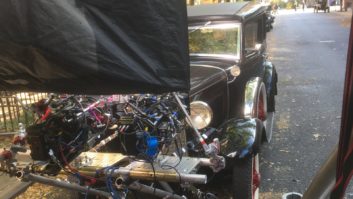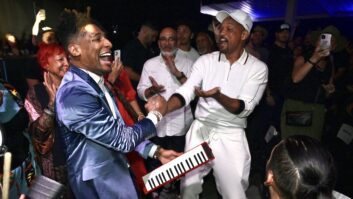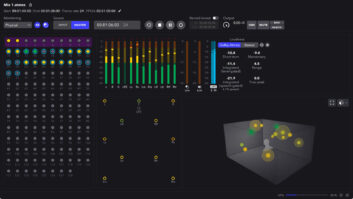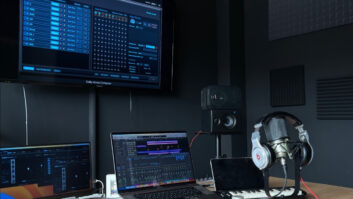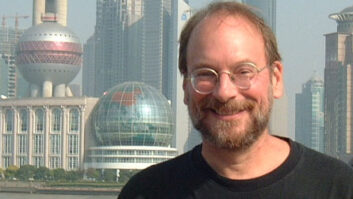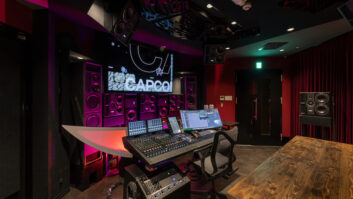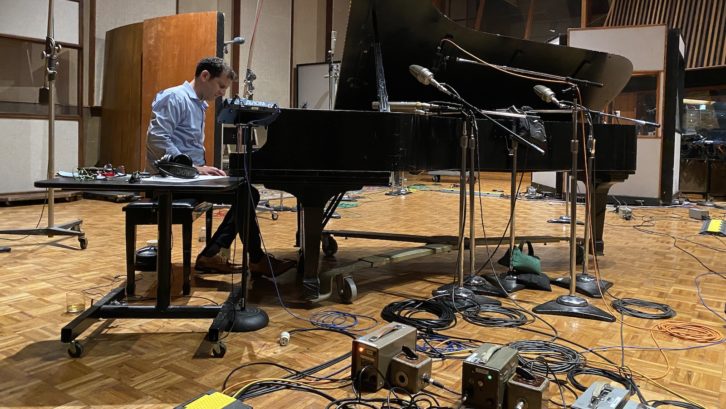
In the ongoing introduction of Dolby Atmos Music to consumers, much of the focus, understandably, has been on the wow factor of showy catalog tracks like “Rocket Man” and “Bohemian Rhapsody.” But for the immersive format to enjoy any sort of long-term success, artists must start producing music conceived and recorded for Dolby Atmos release from the get-go, not just as an afterthought.
Helping to build a catalog of made-for-immersive music, Karma Auger and Erich Gobel, production and mixing partners at Studio1LA, recently visited United Recording in Hollywood, Calif., to track Peter Smith’s jazz piano trio for Dolby Atmos and stereo release. The pair had initially invited Smith to their mix room for a demo; Studio1LA, located behind Auger’s home in Venice, Calif., had been upgraded for immersive work in early 2020.
“We didn’t tell him, but we had done a test mix of a song he performed, arranged and produced,” Auger recalls. “It was the first thing he’d heard in Atmos; he was quite taken by it.” So when Smith’s latest piano trio project was ready to track, he contacted Auger and Gobel, and they booked time in United’s Studio A, a 1,500-plus-squarefoot space with a 23-foot ceiling that has hosted artists from Frank Sinatra and Nat King Cole to Josh Groban and Green Day. Conveniently, United also boasts an impressive microphone collection, originally amassed by former owner Allen Sides when the facility was Ocean Way.
“Eric was the mastermind and came in with the mic choices and everything,” Auger reports. That 40-mic plan included eight of United’s Neumann U 67s and a pair of U 87s, all in cardioid mode, to capture a 6.0 bed with four overheads, mimicking an Atmos speaker layout minus the center channel. “We used between a quarter and a half a million dollars’ worth of microphones,” Auger adds.
There were three layers of room mics, Gobel elaborates. “There was also a Decca tree, which is a little unusual for this application,” he says. Additionally, four Sanken condensers served as close room mics on the three players, with the drums captured in stereo.
“The concept was, ‘Let’s pick the right room, the right mics, the right setup, then create the space for real. Then use as much of that as we possibly can, and the choices within those layers, to create the sound that we want,’” Auger explains, conceding that, in practice, the plan needed some adjustments.
“At first, we had all the mics at the very back of the room,” he recalls, “but the concept was more of a jazz club feel. We realized the room was too big, so we moved the Atmos mics in and created a smaller space.” With the boundaries of the space established, Auger says, they could then position the close room and instrument mics, including pairs of AKG C12 and Neumann M49 large-diaphragm condensers on the piano. “We also realized that it would be easy to make the room a little bigger when we mixed,” Gobel adds, using the spatial toolbox they have developed during their two and a half years of immersive mixing experience. “But you can’t make the room smaller.”
With Violin and Mike Viola, Andrew Bird Tracks at United
The Studio1LA session was the first commercial Dolby Atmos recording session at United, as far as Johnny Morgan, the studio’s session coordinator, is aware. Morgan, who has worked at United for seven years, was impressed with the performance of the Sanken CO-100K mics used on the close room positions. With the session recorded into Pro Tools at 192 kHz, the mics’ frequency response—20 Hz to 100 kHz—really shone through. “When you get past 96 k, they’re great mics, if you place them in a crafty way, like they did,” he says. “The one on the upright bass captured the whole bass sound.”
Studio A’s control room, housing a rare Focusrite 72-input desk, is not outfitted with an immersive monitoring system. “You’re going on best instincts and experience,” Gobel says. “At one point, we looked at each other during the tracking and said, ‘Are we EQing enough?’ Because we really haven’t done a whole lot. I’m in front of this enormous console—I should be doing something!” Gobel laughs. “We had minimal EQ and minimal compression during tracking. I think the piano close mics were just kissing a Fairchild, and the bass mic just kissed the LA-2.”
“We really just went old-school, straight out of the Al Schmitt playbook,” Auger agrees. “Get it done right in the beginning, and there’s just not a lot to do on the back end.”
Taking the tracks back to Studio1LA, Gobel says, “We started with the stereo mixes. That took a minute, because we had so many room mics to choose from and so many different records that we could have made. Ultimately, the songs told us what they wanted to be. Then it’s going to unfold into a bigger Atmos version of that. But we found out pretty quickly that they wanted to be a little bit different records.”
“The stereo mixes told us that they wanted to be more like a modern Blue Note record,” Auger explains, “and the Atmos versions wanted to be slightly more modern, in the way that it unpacks, and the clarity and the dynamics. The dynamic range is the big thing in Atmos.”
Dolby Atmos supports projects at either 48 kHz or 96 kHz. “We got our stereo mixes with minimal compression, minimal EQ and minimal rides, converted the 192 to 96, and built the Atmos session with all the stereo features built in,” Gobel says. “They translated really well.” They had planned to also present the audience perspective of the stereo versions in Atmos, but with a technological twist. “We wanted it to be totally amazing with head-tracking,” Auger says, “so you could turn your head and look at each individual instrument.”
But as Studio1LA mixed, Gobel discovered, “It really wanted to be piano everywhere in the room, so we split the close mics up front, then there’s also the outside mics for the piano in back.” “When we went into AirPods to check, it was much better with the piano all around you,” Auger confirms. “As you turn around, you feel like you’re facing the back of the room, and it’s more ambient; the drums are behind you and the bass is over to your left, but the piano is still in your face and present.”
“It has a lot of impact, and you hear so much detail,” Gobel says of the Atmos presentation. “It’s really powerful.”
